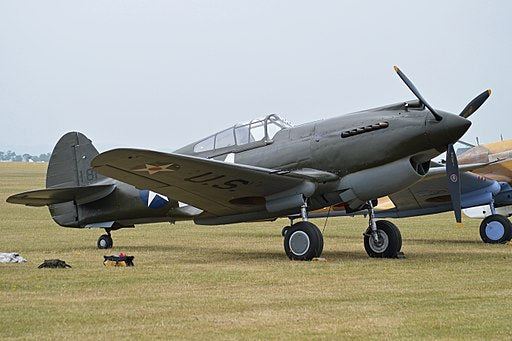When it comes to the world of aviation, the Curtiss P-40 Warhawk occupies an intriguing chapter. A single-engine, single-seat, fully metallic fighter and ground-attack aircraft, the P-40 rose to prominence during the sweeping saga of World War II. Its distinctive shark mouth motif, vividly daubed across its prow, is a symbol steeped in nostalgia and a testament to the aircraft’s cultural significance. But what was the verdict of those who tamed this beast of the skies?
A Study in Contrasts: Performance and Design
With its reputation for being resilient and adaptable, the P-40 carved out a unique niche. It was renowned for its robust construction, capable of enduring extensive damage while remaining airborne. The P-40’s multifaceted nature was another of its strengths—it was equally at home in the roles of fighter, bomber escort, and ground-attack aircraft.
However, the P-40 was not without its share of critics. When compared to technologically superior contemporaries such as the Spitfire or the Messerschmitt Bf 109, the P-40 might have appeared somewhat simple. But this stalwart aircraft held its ground, displaying particular prowess in the Pacific and North African theaters of war.
The P-40’s performance presented a paradox. Despite falling short in terms of top speed and rate of climb and its lackluster high-altitude performance, it was nonetheless a dependable aircraft in low to medium-altitude operations. The Warhawk’s impressive dive speed often proved to be a game-changer in the high-octane world of dogfights.
A Pilot’s Diary: Voices from the Cockpit
Delving into the annals of history, the voices of those who piloted the P-40 offer a fascinating mix of admiration and critique. Many an aviator sang praises of the P-40’s robustness and dependability. The aircraft’s uncanny ability to weather a storm of bullets and still return to base was a trait that won it many admirers. Some aviators even fondly referred to it as ‘an old friend,’ a testament to its resilience in the face of adversity.
Yet, the P-40 was not immune to criticism. A few pilots lamented its lack of agility, which sometimes proved a liability during intense dogfights. The cockpit’s cramped conditions, and poor rear visibility were other points of contention.
However, it’s worth acknowledging that many of these criticisms were tempered with understanding. The aviators who manned the P-40 were well aware of the circumstances of its conception—it was a product born out of necessity, a swift response to the urgent calls of war. While the P-40 had its fair share of flaws, the pilots respected its capabilities and recognized its significant contribution to the war effort.
A Look Back: The P-40’s Enduring Legacy
In retrospect, the P-40’s influence on aviation history is undeniable. Its striking design and crucial role in numerous pivotal WWII battles have solidified its legacy. Despite not being the star performer of its time, many who flew the P-40 harbored a deep affection for this rugged and reliable machine. Its tenacity and adaptability made it an invaluable asset on the battlefield and a favorite amongst many aviators.
To wrap it up, the P-40, like any other aircraft, had its unique blend of strengths and weaknesses. Some pilots cherished its reliability and hardiness, while others quickly pointed out its performance limitations and design shortcomings. Regardless, the P-40 has left an indelible impression on the canvas of aviation history. Whether loved or respected, the P-40 Warhawk is undeniably a symbol of an era where adaptability and resilience were the order of the day. Its ability to rise above its limitations, much like the pilots who flew it, is a timeless testament to the human spirit’s ability to persevere and triumph against the odds.
For more insights into the P-40 Warhawk and other important military aircraft, visit Aces In Action. Here, you’ll find a piece of artwork by Craig Tinder titled “Return from Canton,” that depicts the heroism and determination of AVG Ace “Tex Hill” from the famed Flying Tigers. The limited edition canvas print even includes a fragment from the P-40 that was supplied to Russia’s 19th Guards Regiment.
“Return from Canton” – P-40E Warhawk Aviation Art Print by Artist Craig Tinder
In the early morning of July 6th, 1942, Major David Lee “Tex” Hill, an experienced fighter pilot with the Flying Tigers, took off from Kweilin, leading a flight of four P-40E Warhawks. Their mission was to escort five B-25 Mitchell bombers on their way to bomb an oil refinery at Canton. The flight encountered low overcast clouds, but fortunately, the clouds cleared up over Canton, and the bombers were able to hit their target. However, on their way back, one of the B-25 pilots reported being attacked by Japanese Ki-27 fighters. Hill, who was vigilant and always prepared for any eventuality, quickly led his flight in a counter-attack on the enemy aircraft. They managed to shoot down two confirmed Japanese fighters and the mission was deemed a success.





Share:
What is so special about the F-16?
Who were the Tuskegee Airmen and what is their importance in American History?